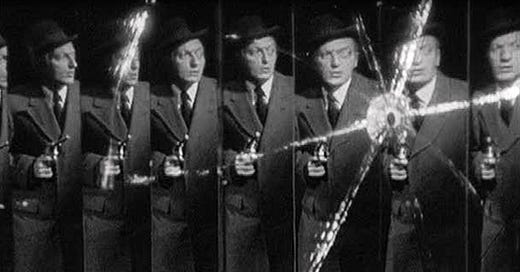As an addendum to my previous short post on conspiracies and the JFK assassination I’ve been reading some of the fascinating journalism of Ron Unz. His site, unz.com is a bastion of free speech, including some quite odious speech many would find distasteful. But that’s exactly the point: all voices must be countenanced with a faith in democracy and the citizenry that truth and decency will ultimately win out.
Back to Unz’ reporting: he has an excellent new piece on the assassinations of John and Robert Kennedy I highly recommend reading in full. One bit stood out though, with regard to how conspiracies are carried out and covered up, that resonates deeply with my prior post on this subject.
Here is the quote:
John Newman had spent twenty years in Military Intelligence and then became a professor of history at the University of Maryland. Since then, he had applied the technical skills that he had honed in his many years of government service to analyzing the bureaucratic minutia of declassified government files and using this material to produce a series of books on the hidden side of American government policies during the 1960s, including our growing involvement in Vietnam and especially the complex circumstances of the JFK Assassination. Oswald and the CIA originally appeared in 1993, but the 2008 edition included a new epilogue, summarizing some of his most important findings.
The book is a lengthy one, running over 650 pages with notes and appendices, and his exhaustively detailed analysis of the released intelligence files and their interpretation can be eye-glazingly dull at points, but his broader conclusions are not difficult to state. The profusion of internal CIA documents regarding Oswald and his movements seems completely inconsistent with any institutional plot at the Agency to kill Kennedy, but might fit very well with the hypothesis of a “rogue faction” at the CIA having played a central role in the affair.
Newman argued that Oswald was exactly the “patsy” that he claimed to be, but more importantly he drew a very sharp distinction between the small group of plotters who had actually organized the JFK assassination itself and the much larger group who carried out the subsequent cover-up, with the motives of many of those latter individuals being entirely different. As he persuasively explained in his epilogue, the conspirators had created a false intelligence trail suggesting that Oswald might have been a Soviet agent, and then used that misinformation to force our fearful government leadership into become their unwitting accomplices after the fact, compelling them to suppress all evidence of any conspiracy in Dallas…
So under Newman’s convincing reconstruction, most of the powerful American officials who played such a pivotal role in concealing the conspiracy may have been acting under the best of intentions, seeking to protect our country from the risk of a devastating retaliatory war with the Soviets. And obviously these concerns would have been deliberately fanned by those among them who had been involved in the plot and created the false trail of evidence connecting Oswald with KGB assassination efforts.
The author therefore argued that creating that false trail had constituted an absolutely crucial element of the assassination plot, and by a very careful examination of the intelligence files, he concluded that longtime CIA Counter-Intelligence Chief James Angleton had been the likely culprit, thus identifying him as one of the key conspirators. This conclusion meshes perfectly with the entirely different arguments advanced by the late Michael Collins Piper in Final Judgment, his 1994 landmark work, which had also argued that Angleton was a central figure in the assassination.
James Jesus Angleton was a pivotal figure during the early decades of the CIA. He is arguably the second most important figure within the agency after Allen Dulles himself. He was the master of the hall of mirrors — narratives inside narratives, wrapping around to seeming contradictions leading to fuzzy, exasperating confusion.
JFK and RFK were, by a preponderance of the evidence, assassinated by a very small internal faction centered on Dulles and Angleton, likely with assistance from J. Edgar Hoover and some of his most trusted confidants, and protected by mirrored halls of misdirection and the institutional imperatives of self-preservation and preservation of the republic.
If you are interested in this subject please read Unz’ article in full.




"The purpose of a system is what it does"